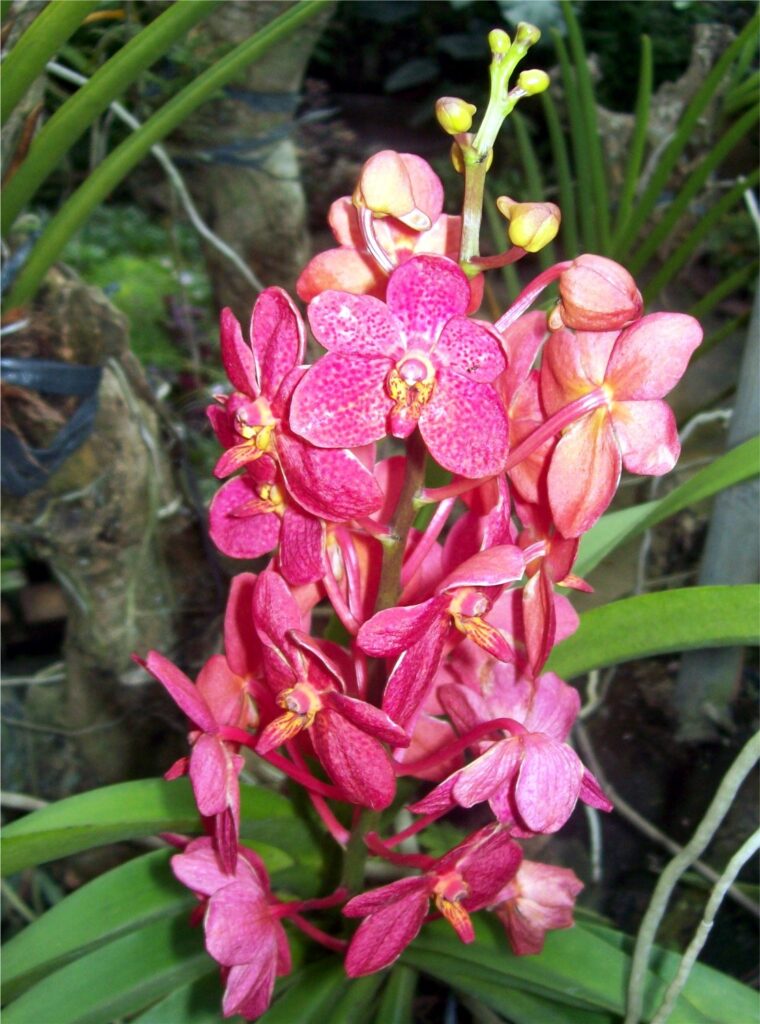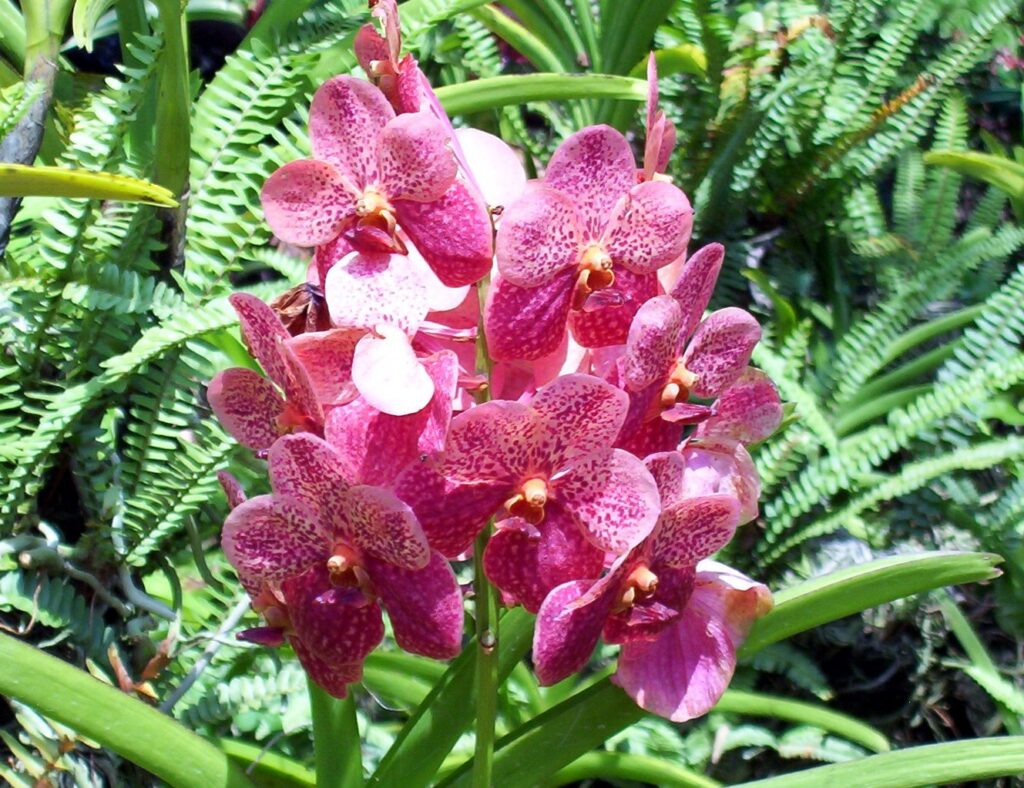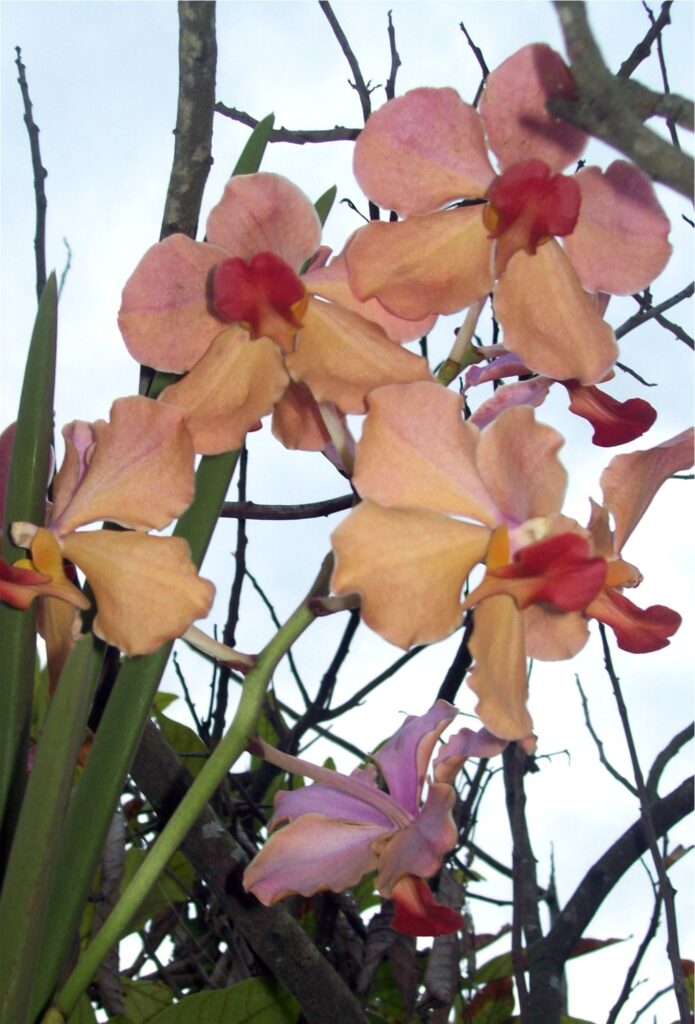Text and Photos by Henrylito D. Tacio
The Royal Botanical Gardens of Kew list 880 genera and nearly 22,000 accepted species of orchids, but the exact number is unknown (perhaps as many as 25,000) because of taxonomic disputes. The number of orchid species equals about four times the number of mammal species, or more than twice the number of bird species. Every year, about 800 new orchid species are added each year.
Filipinos have always been fascinated by orchids. Phalaenopsis (butterfly orchids), Dendrobiums (relative of “sanggumay”), and Vandas (relative of “waling-waling”) both native and hybrids, adorn many homes and gardens.
Some orchids are difficult to grow and quite exacting in their cultural requirements. Thus, growers are on the look-out for easy-to-grow types. The Semiterete Vandas readily fit in this category.
“Aside from having a ‘no fuss’ character, they are popular and flower profusely all year round,” said an investment primer published by the Laguna-based Philippine Council for Agriculture, Forestry and Natural Resources Research and Development (PCARRD). “Their flowers, which come in different shapes and colors such as red, pink, blue, green, yellow, and white, are in great demand locally.”
Orchids are in great demand during the special months of February (month of hearts), March (graduation month), May (fiesta and Santracruzan month), June (wedding month), November (month for remembering the dead), and December (holiday season and gift-giving month). “During these special months, increased demand and price go hand-in-hand thus, ensuring good income for growers,” PCARRD states.
Unlike other cutflowers that require expensive structure for their production to protect them from the sun and rain, semiterete vandas are happy under the sun and flower best in full sunlight. These are more resistant to diseases compared with other vandas and can withstand open culture without protection from the heavy monsoon rains in June to October.
Cutflower production does not require a big area to be profitable. A 100-square meter lot is enough to generate good income. An unused piece of land around the house can also be used for this purpose. Aside from beautifying the home, cutflower production can also be a good source of income.
For those who want to grow orchids – any type of orchids – here are some basic tips from orchid enthusiast Jose Mari M. Lacandula:
Where to buy: Purchase your orchids from a reputable nursery to ensure that you get a properly labeled plant and can return for advice. There are also websites that sell hard-to-find plants.
How to spot a good one: Go by the leaves. “Select plants with glossy green and intact leaves,” Lacandula says. A robust root system and small intervals of past flowering are also good signs.
What it needs: The same amount of light it would receive in the wild; usually filtered sunlight. When unsure, don’t water that day. And remember the old saying, “weakly, weekly” when fertilizing.
Common problems: Scales can form on the underside of the leaves, and heavily infested plants should be discarded. Failure to flower is typically due to poor growing conditions, especially inadequate light and fertilizer. — ###





